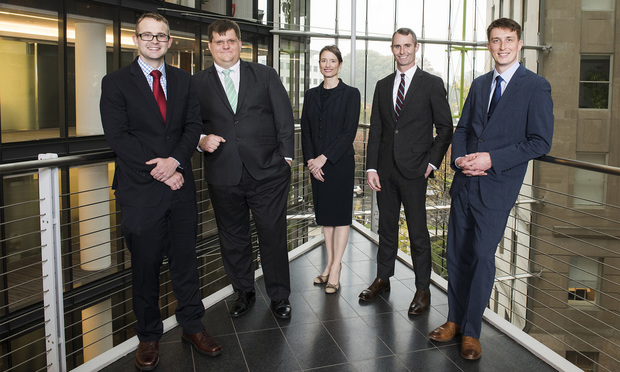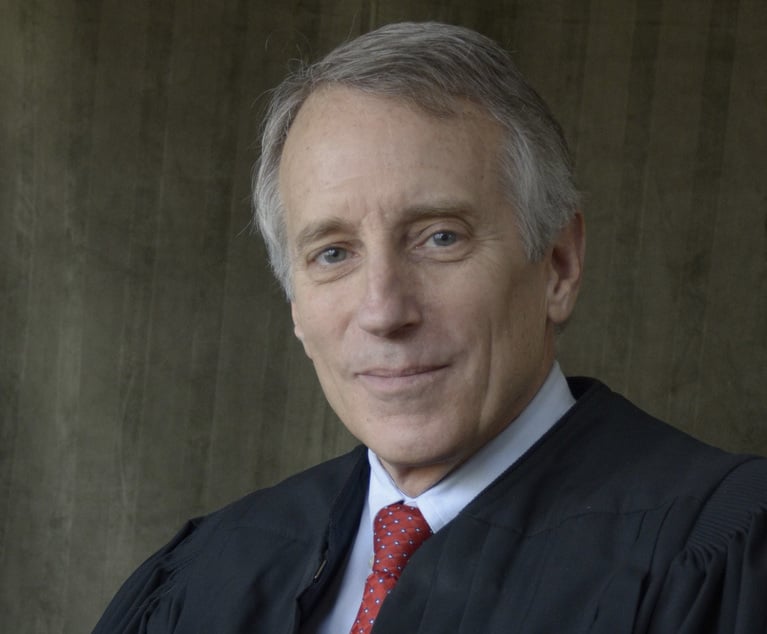Jones Day Stocks Up on More Ex-SCOTUS Clerks
Adding five former U.S. Supreme Court clerks from last term's "class,” Jones Day has now hired 36 ex-SCOTUS clerks in the last five years.
November 29, 2017 at 03:00 PM
3 minute read

Jones Day announced Wednesday that it has hired five former U.S. Supreme Court clerks from last term's “class,” including Kamaile Turčan—the court's first Native Hawaiian law clerk.
The hires bring the total to 36 Supreme Court clerks hired by Jones Day in the last five years, almost certainly an unmatched concentration in a single law firm. The hiring effort reached its high point in 2015 with 10 clerk hires. In 2016 the firm hired only two, leading some to wonder if the firm had had its fill of incoming Supreme Court law clerks, who command hefty hiring bonuses now running between $300,000 and $350,000.
But the firm has never regretted the investment. Beth Heifetz, who chairs Jones Day's issues and appeals practice—the landing spot for most of the clerk hires—said, “Sometimes there's a perception that with the number of clerks that we've been able to hire, that there's some sort of over-saturation. But, in fact, it's only a perception, and it's wrong. We have plenty of work for the clerks, and we would be happy to hire more.”
The five new hires came from the chambers of four justices from across the ideological spectrum: Turčan, who clerked for Justice Sonia Sotomayor; Ben Cassady and Alex Potapov, who worked for Justice Samuel Alito Jr.; Conor Reardon, who clerked for Chief Justice John Roberts, Jr.; and Parker Rider-Longmaid, who clerked for Justice Ruth Bader Ginsburg.
That array also may blunt speculation that the numerous Jones Day lawyers who have joined the Trump administration might be prompting some talent to look elsewhere.
“It was a hands-down easy choice,” said Rider-Longmaid, the Ginsburg clerk. “The folks at Jones Day span the ideological spectrum. You learn the most, you grow the most,” when exposed to a range of views, he added. He called Ginsburg “one of the wisest, kindest mentors anyone could have.”
Rider-Longmaid said he decided to head to Jones Day for five reasons: its “very collaborative” people, its commitment to service and pro bono, its professional development programs for associates, the “good fun” its people seem to have, and one more logistical factor: “It doesn't hurt to have the Supreme Court so physically close. It's just up the hill, which makes going back for oral argument or to visit very easy.” Jones Day's Washington office is at the foot of Capitol Hill.
Another intangible fact was the familiar faces he has seen since starting at the firm in September: “It's nice to have former colleagues around—the discussion, the energy that occurs. You always have several other brilliant minds you can pick when you're working on a tough issue.”
He also knocked down suggestions that the firm does not have enough work for the former clerks, who are barred from appearing before the court for two years after their clerkship. “I've already been drafting briefs raising novel and difficult constitutional questions,” Rider-Longmaid said. “There's plenty of work to go around.”
This content has been archived. It is available through our partners, LexisNexis® and Bloomberg Law.
To view this content, please continue to their sites.
Not a Lexis Subscriber?
Subscribe Now
Not a Bloomberg Law Subscriber?
Subscribe Now
NOT FOR REPRINT
© 2025 ALM Global, LLC, All Rights Reserved. Request academic re-use from www.copyright.com. All other uses, submit a request to [email protected]. For more information visit Asset & Logo Licensing.
You Might Like
View All
'If the Job Is Better, You Get Better': Chief District Judge Discusses Overcoming Negative Perceptions

Pentagon Settles Suit Seeking to Clear Records of Service Members Discharged for Being LGBTQ
3 minute read
Female GCs Joining Corporate Boards in Large Numbers, Overcoming Biases and Stereotypes Along Way
9 minute read
Trending Stories
- 1Uber Files RICO Suit Against Plaintiff-Side Firms Alleging Fraudulent Injury Claims
- 2The Law Firm Disrupted: Scrutinizing the Elephant More Than the Mouse
- 3Inherent Diminished Value Damages Unavailable to 3rd-Party Claimants, Court Says
- 4Pa. Defense Firm Sued by Client Over Ex-Eagles Player's $43.5M Med Mal Win
- 5Losses Mount at Morris Manning, but Departing Ex-Chair Stays Bullish About His Old Firm's Future
Who Got The Work
J. Brugh Lower of Gibbons has entered an appearance for industrial equipment supplier Devco Corporation in a pending trademark infringement lawsuit. The suit, accusing the defendant of selling knock-off Graco products, was filed Dec. 18 in New Jersey District Court by Rivkin Radler on behalf of Graco Inc. and Graco Minnesota. The case, assigned to U.S. District Judge Zahid N. Quraishi, is 3:24-cv-11294, Graco Inc. et al v. Devco Corporation.
Who Got The Work
Rebecca Maller-Stein and Kent A. Yalowitz of Arnold & Porter Kaye Scholer have entered their appearances for Hanaco Venture Capital and its executives, Lior Prosor and David Frankel, in a pending securities lawsuit. The action, filed on Dec. 24 in New York Southern District Court by Zell, Aron & Co. on behalf of Goldeneye Advisors, accuses the defendants of negligently and fraudulently managing the plaintiff's $1 million investment. The case, assigned to U.S. District Judge Vernon S. Broderick, is 1:24-cv-09918, Goldeneye Advisors, LLC v. Hanaco Venture Capital, Ltd. et al.
Who Got The Work
Attorneys from A&O Shearman has stepped in as defense counsel for Toronto-Dominion Bank and other defendants in a pending securities class action. The suit, filed Dec. 11 in New York Southern District Court by Bleichmar Fonti & Auld, accuses the defendants of concealing the bank's 'pervasive' deficiencies in regards to its compliance with the Bank Secrecy Act and the quality of its anti-money laundering controls. The case, assigned to U.S. District Judge Arun Subramanian, is 1:24-cv-09445, Gonzalez v. The Toronto-Dominion Bank et al.
Who Got The Work
Crown Castle International, a Pennsylvania company providing shared communications infrastructure, has turned to Luke D. Wolf of Gordon Rees Scully Mansukhani to fend off a pending breach-of-contract lawsuit. The court action, filed Nov. 25 in Michigan Eastern District Court by Hooper Hathaway PC on behalf of The Town Residences LLC, accuses Crown Castle of failing to transfer approximately $30,000 in utility payments from T-Mobile in breach of a roof-top lease and assignment agreement. The case, assigned to U.S. District Judge Susan K. Declercq, is 2:24-cv-13131, The Town Residences LLC v. T-Mobile US, Inc. et al.
Who Got The Work
Wilfred P. Coronato and Daniel M. Schwartz of McCarter & English have stepped in as defense counsel to Electrolux Home Products Inc. in a pending product liability lawsuit. The court action, filed Nov. 26 in New York Eastern District Court by Poulos Lopiccolo PC and Nagel Rice LLP on behalf of David Stern, alleges that the defendant's refrigerators’ drawers and shelving repeatedly break and fall apart within months after purchase. The case, assigned to U.S. District Judge Joan M. Azrack, is 2:24-cv-08204, Stern v. Electrolux Home Products, Inc.
Featured Firms
Law Offices of Gary Martin Hays & Associates, P.C.
(470) 294-1674
Law Offices of Mark E. Salomone
(857) 444-6468
Smith & Hassler
(713) 739-1250








